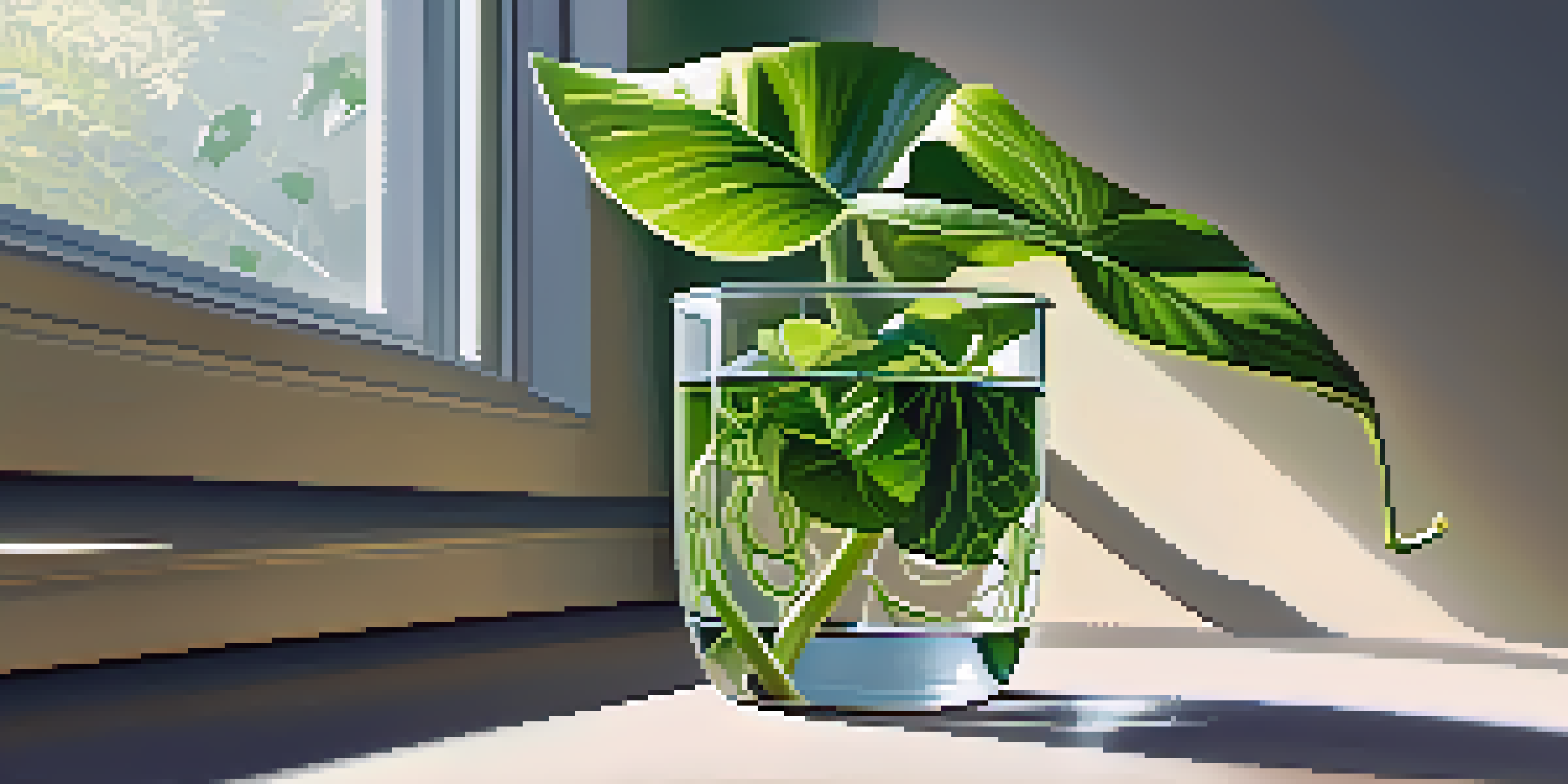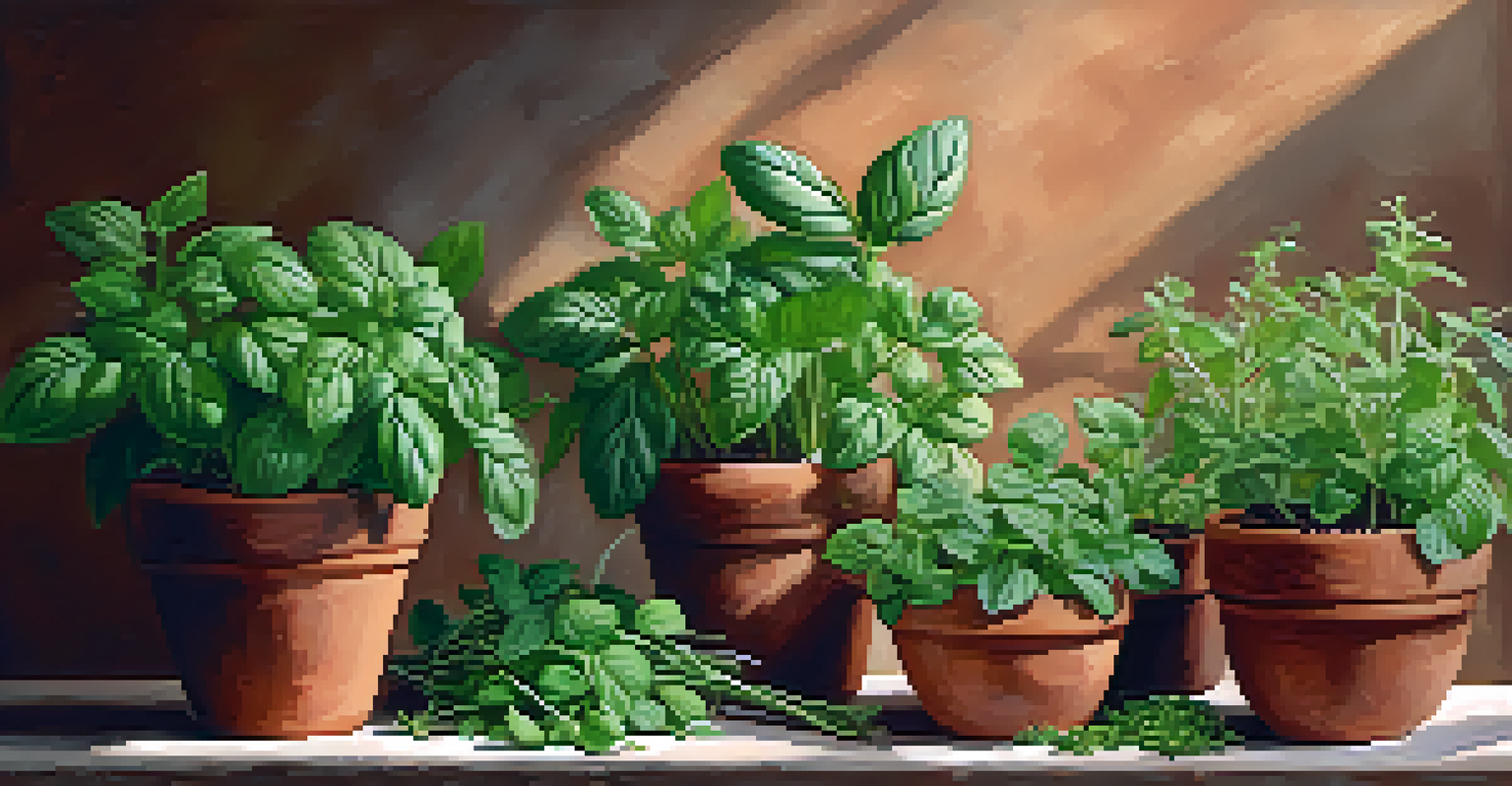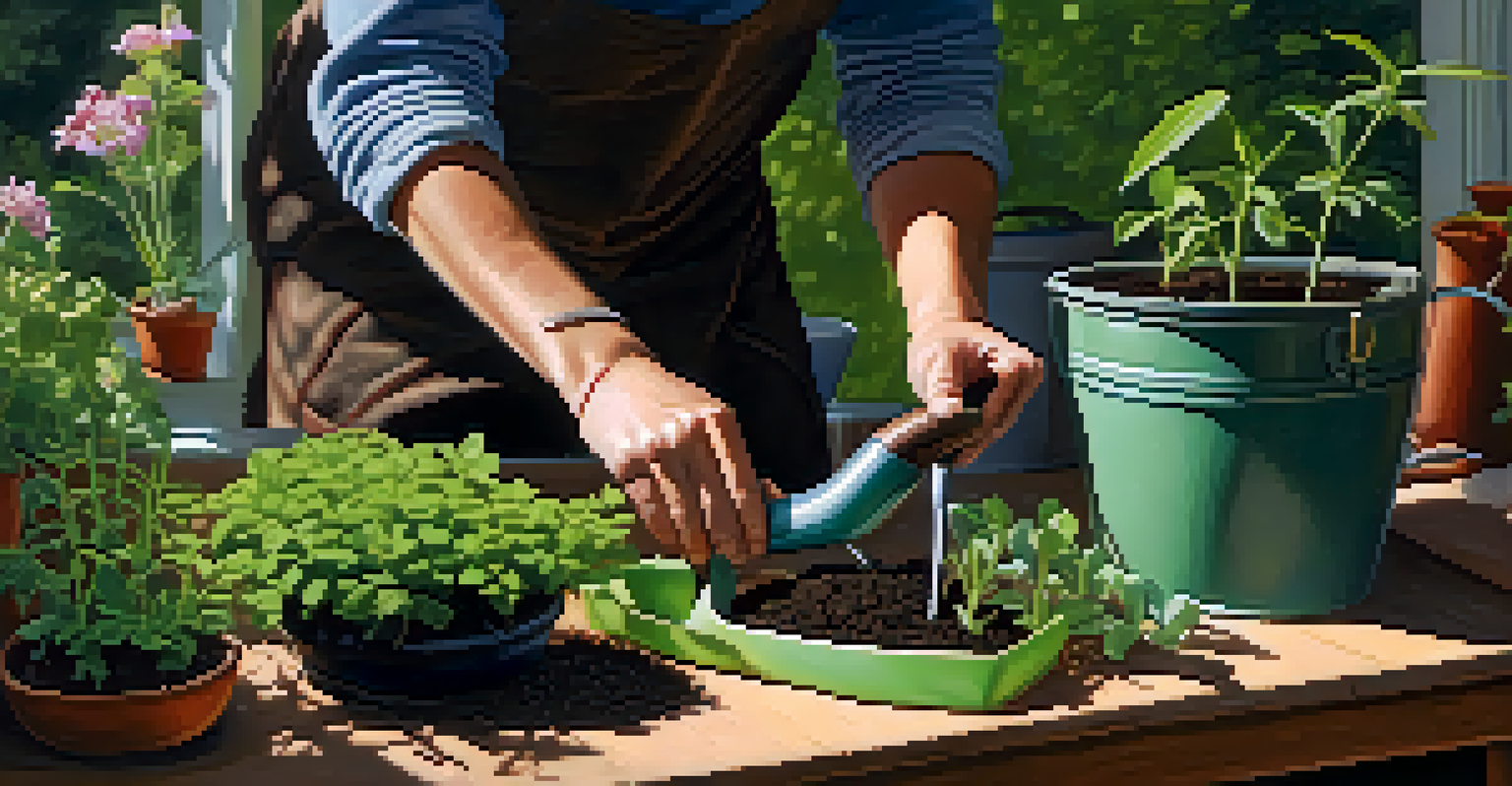Using Stem Cuttings for Fast and Easy Plant Growth

Understanding Stem Cuttings: The Basics of Plant Propagation
Stem cuttings are a popular method for propagating plants, allowing you to create new plants from existing ones. This technique involves taking a piece of a plant's stem and encouraging it to grow roots. It's an accessible and cost-effective way to multiply your plant collection without the need for seeds.
To plant a garden is to believe in tomorrow.
There are two main types of stem cuttings: softwood and hardwood. Softwood cuttings are taken from young, flexible stems during the growing season, while hardwood cuttings come from mature stems during dormancy. Understanding which type to use is crucial for successful propagation.
By using stem cuttings, you can enjoy faster growth and more immediate results compared to other methods. This makes it a favorite among both novice gardeners and seasoned horticulturists alike.
Choosing the Right Plants for Stem Cuttings
Not all plants respond well to stem cuttings, so it's important to choose the right candidates. Popular choices include pothos, succulents, and many herb varieties like basil and mint. These plants typically root easily and thrive in various conditions.

When selecting a plant for cuttings, look for healthy, disease-free stems. The best time to take cuttings is during the active growing season, as this increases the chances of successful rooting. Remember, the healthier the parent plant, the better your chances of success.
Stem Cuttings for Plant Propagation
Using stem cuttings allows you to easily propagate new plants from healthy existing ones.
It’s also beneficial to consider the climate and environment of your plants. Some species may require specific conditions to root effectively, so do a little research before diving in.
Step-by-Step Guide to Taking Stem Cuttings
Taking cuttings is a straightforward process. Begin by gathering your materials: sharp scissors or pruning shears, a clean container of water or potting mix, and rooting hormone if desired. Clean tools help prevent the spread of disease, ensuring a healthy start for your new plants.
Gardening is the purest of human pleasures.
Select a healthy stem and cut a 4-6 inch section just below a leaf node. This node is where roots will emerge, so it's crucial to include it in your cutting. Remove any lower leaves to prevent them from rotting in the water or soil, which can introduce bacteria.
If you’re using rooting hormone, dip the cut end into the powder before planting it in your potting mix or placing it in water. This hormone can help stimulate root growth, speeding up the process.
Caring for Your Cuttings: Best Practices
Once you've taken your cuttings, proper care is essential for successful rooting. If planted in soil, keep the mix consistently moist but not soggy. If using water, change it regularly to prevent stagnation and encourage healthy root development.
Provide your cuttings with bright, indirect light. Too much direct sunlight can scorch the cuttings, while too little can hinder growth. A warm, humid environment is ideal, so consider covering the cuttings with a plastic bag to maintain humidity, but ensure there's some airflow to prevent mold.
Choosing the Right Plants Matters
Selecting suitable plants, like pothos and succulents, increases the chances of successful rooting.
Monitoring your cuttings regularly will help you catch any issues early. Look for signs of new growth, which indicate successful rooting, and be patient, as it can take a few weeks for roots to develop.
Transplanting: When and How to Move Your Cuttings
After a few weeks, you should start to see new growth or roots forming. At this point, it’s time to consider transplanting your cuttings into larger pots or into your garden. It’s important to wait until the roots are a few inches long to ensure they can support the plant's needs.
Gently remove the cutting from its container, being careful not to damage the delicate roots. Prepare a new pot with fresh potting mix, and create a hole for the cutting. Place the root system into the hole and cover it with soil, making sure to firm it gently around the base to eliminate air pockets.
After transplanting, water the cutting thoroughly and place it in a location with indirect light. This transition phase is crucial, as the cutting may experience some shock. Keep an eye on it and provide the same care you did during the rooting stage.
Common Challenges and How to Overcome Them
Even with careful attention, some cuttings may struggle to root. Common issues include rotting, yellowing leaves, or lack of growth. If you notice these signs, check the moisture levels in the soil or water, as overwatering is often a culprit.
Another challenge can be pests or diseases that may affect your cuttings. Regularly inspect your plants for any signs of trouble, and act quickly if you spot anything unusual. Using clean tools and maintaining good hygiene practices can help prevent infestations.
Caring for Cuttings is Essential
Proper care, including maintaining moisture and providing indirect light, is crucial for successful rooting.
If a cutting fails to root after several weeks, don’t be discouraged! Sometimes, it’s simply a matter of timing or environmental factors. Consider trying again with a new cutting or experimenting with different plants to find what works best for you.
The Joy of Propagation: Expanding Your Plant Family
One of the most rewarding aspects of using stem cuttings is the ability to expand your plant family without breaking the bank. Sharing cuttings with friends or exchanging them can foster a sense of community among plant enthusiasts. Plus, it’s a great way to learn from others’ experiences.
As you become more confident in taking cuttings, you might find yourself experimenting with a wider variety of plants. This exploration can lead to new favorites and an even more diverse indoor garden. Imagine the satisfaction of nurturing a thriving plant that began as a simple cutting!

In essence, using stem cuttings not only enhances your gardening skills but also deepens your appreciation for nature. Each successful propagation is a testament to your care and dedication, making your green thumb even greener.